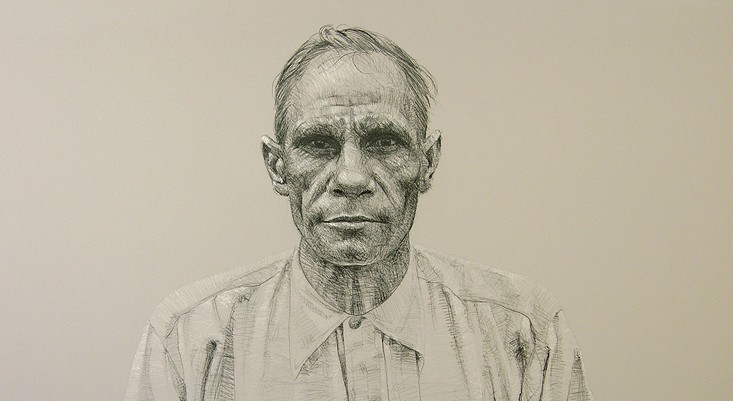Transforming Tindale

PAST EXHIBITION
Transforming Tindale
- Home
- Transforming Tindale
/
6 September 2012 – 9 December 2012
slqGallery, Level 2
Unheard stories are given a voice in this powerful exhibition of scientific photographs and contemporary artworks, exploring the legacy of Norman Tindale's 1938 anthropological expedition to Aboriginal communities.
Artist Vernon Ah Kee has drawn inspiration from photographs of his family in the Tindale collection to produce poignant works capturing the personalities behind the scientific images.
Transforming Tindale is a thought-provoking journey into the Tindale collection, what it means to Aboriginal people and its place in Queensland's history.

Vernon Ah Kee, neither pride nor courage, 2006, 1 of 3 - The James C. Sourris, AM, Collection, Gift of James C Sourris through the Queensland Art Gallery Foundation 2007. Donated through the Australian Government’s Cultural Gifts Program
Tindale collection
Tindale's original research is held at the South Australian Museum. State Library has copies of genealogical information and photographs from the Tindale collection available for the Queensland Aboriginal communities of Mona Mona, Yarrabah, Palm Island, Woorabinda and Cherbourg, as well as two northern New South Wales communities at Boggabilla and Woodenbong.
State Library has also created an online index of names recorded in the genealogies. There are restrictions on who can access the full family tree information and photographs. Access to these records can be arranged by contacting the John Oxley Library.
Michael Aird and Vernon Ah Kee are in conversation with Louise Denoon about their work curating the exhibition Transforming Tindale for State Library. They discuss such topics as: the Tindale collection including historical contexts and racist policies towards Aboriginal people as well as their personal experiences with the material; the idea of transforming the Tindale collection; the curatorial process including their community engagement work with Aboriginal families and communities; and the power and psychology of a portrait.